Proper float shipping is a very important part of
float fishing . And the point is not only in the aesthetic component, in the beauty of the observed bites. A float rig can be made either sensitive and responsive to any touch, or completely unresponsive. And all this depends on the correct loading of the float.
The importance of correct loading
You can load the float simply and thoughtlessly by hanging weights on the fishing line. But only if you choose the right load for a given float, fishing conditions and other factors, you can count on success. To understand the importance of correct loading, it is worth imagining how the tackle will behave in case of improper loading. If the float is underloaded, then the fish approaching and touching the bait will feel the resistance of the float. This can scare the fish away and they will simply spit out the bait. In this case, the angler will see a bite, but it will be too late and he will not have time to react to the bite, unless the fish itself is detected. You can also overload the signaling device, in which case even the slightest breath of wind will hide the float under water, which makes fishing inefficient and simply impossible. With proper loading, the fish will be able to move freely with the bait and all its movements will immediately be beaten off on the float, as a bite signaling device. Loading float gear consists of the main cargo and podpaska. The shepherd additionally loads the float to the working condition by the last quarter of the float weight. The float consists of a keel, a body and a tip. The classic option for loading a float is loading in the middle of the tip. Then, when drowning the float, as well as when biting on the rise, it will be easy for the fish to set in motion only half of the top of the float. The tops in the floats are made thin, they create almost no resistance. All sinkers can be divided into several main types: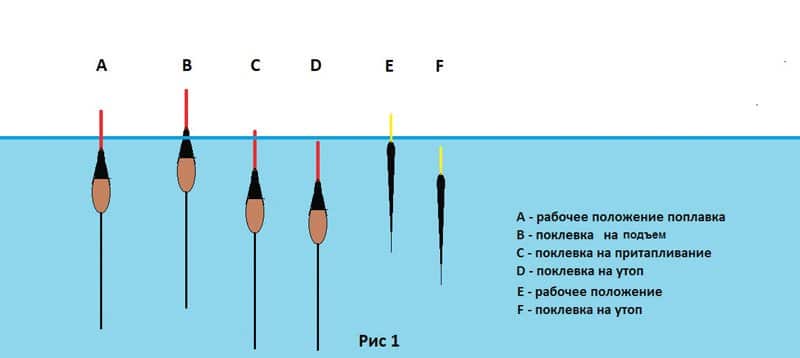

What methods are used to load the float

Fraction
Shotguns are one of the easiest options for weighting a float. Shotguns are either weighing a few grams or very small, only 0.15-0.2 grams. The spherical shape does not create additional resistance and easily enters the water. Attached to the line very easily. The fishing line is inserted into a special section of the pellet and the pellet bites. However, you should be careful not to break the line. Otherwise, in these places the fishing line can easily break. But such an installation is a big plus of shots – they can be easily rearranged, added or reduced if necessary. Lead shot sets can be found at any fishing store.
Olives
Olives got their name from their characteristic shape. This type of weights is used when loading heavier floats. They also have good flight characteristics, so they are used for long-range casting of sliding equipment. They are attached to the fishing line through a through hole made through the entire olive.
Lead sheets
Sheet lead is one of the old-fashioned options for loading floats, which has gained a new life today. Lead can be flattened and then cut into lead strips from the resulting sheet. These strips are the material for the weights. This version of the sinker allows you to accurately select the desired weight for loading the float. Ready-made lead tapes are sold in stores with a lined scale that indicates how many grams are in this segment.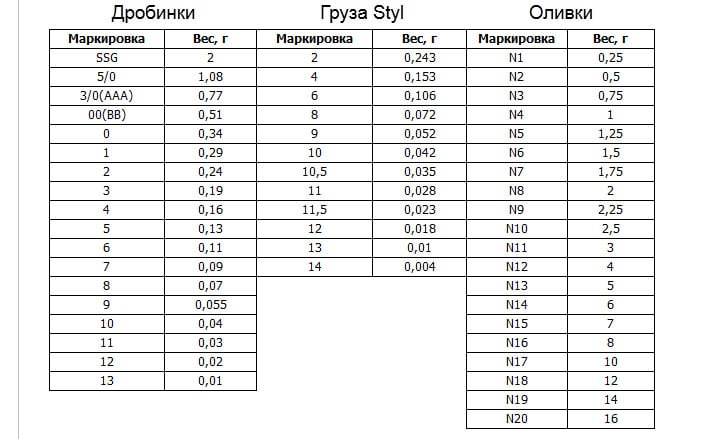
Types and options for loading float gear
There are several main types in order to efficiently and sensitively load the float gear. This is a spaced rig and a single point rig.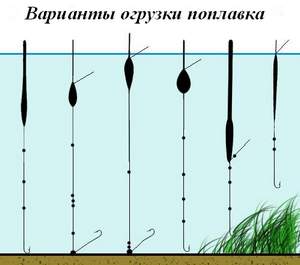
catching roach and bleak in the wiring on the course. Then the load is placed closer to the float. This allows the float to quickly get into position. And the baited hook falls freely in the water column. If it is necessary that the hook passes through the water column faster, the weight is moved closer to the hook.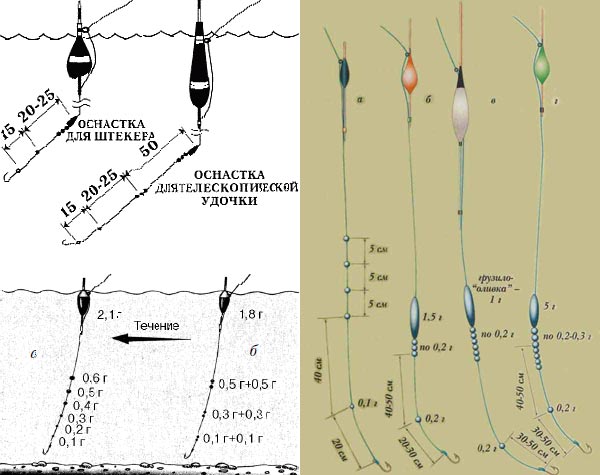
How to properly load the float for different conditions and different fish
Depending on the fishing conditions, choose a different option to lower the float under the water. So fishing on a stagnant pond gives an advantage and allows you to use the most sensitive options for loads. In this case, you can use a spaced shipment, use a shed and ship the float to the middle of the antenna. This will allow you to notice any touches of the fish.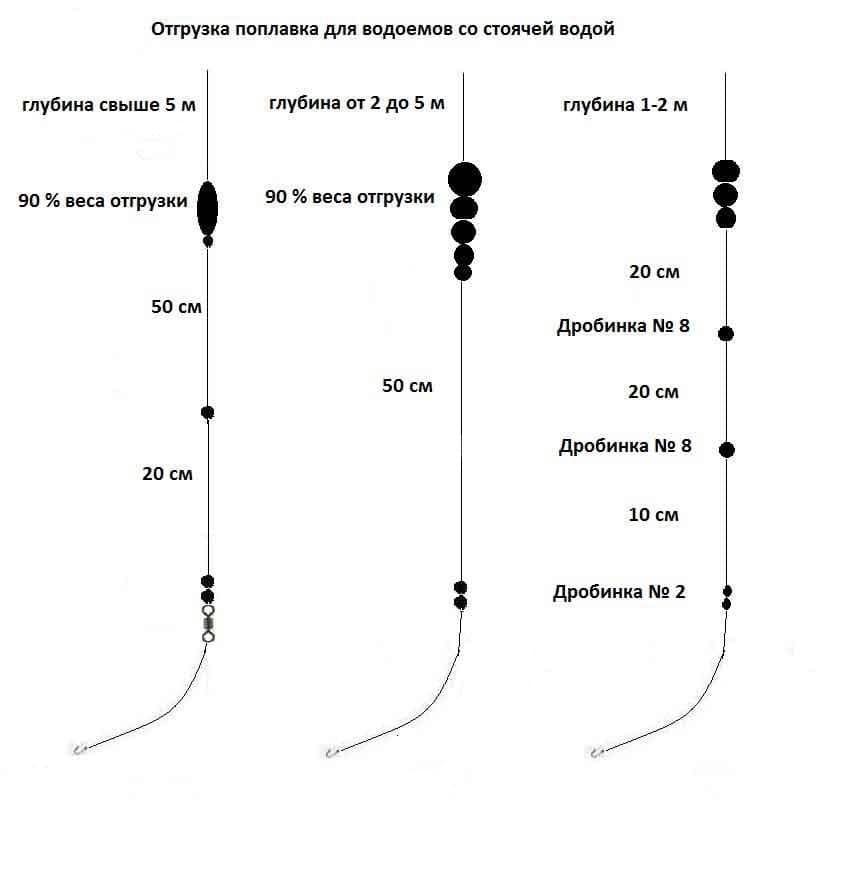
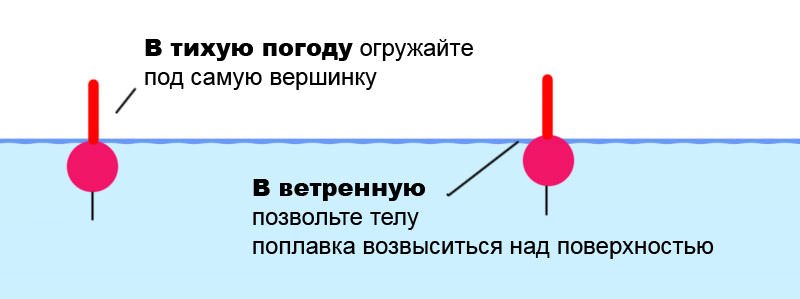
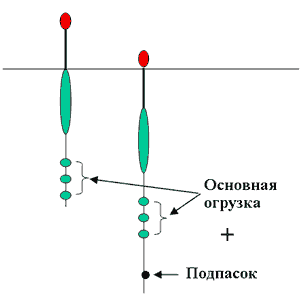
topand roach, then the nozzle should slowly pass the upper and middle layers of water, since biting can occur here. Fish react well to slowly sinking bait, such as
maggot or dusty bait, such as semolina. In this case, the entire main load is shifted closer to the float.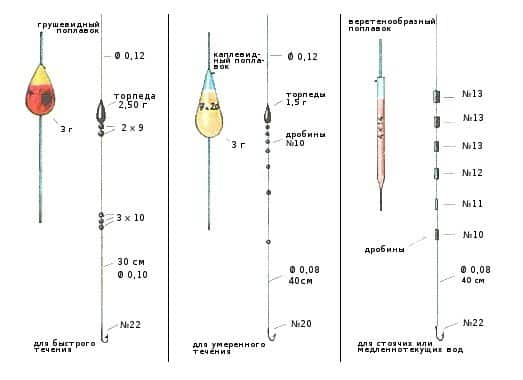
Float unloader
There are special devices for loading floats. They are harvested from buoyant materials such as plastic and shipped extra to achieve neutral buoyancy. Such devices resemble inverted elongated hats. At the top of this design is a latch for attaching the keel of the float. Thus the float becomes neutrally loaded. Further, in the fields of this “hat” the load, pellets and other applied weights are added. Weights are added until the float is fully loaded.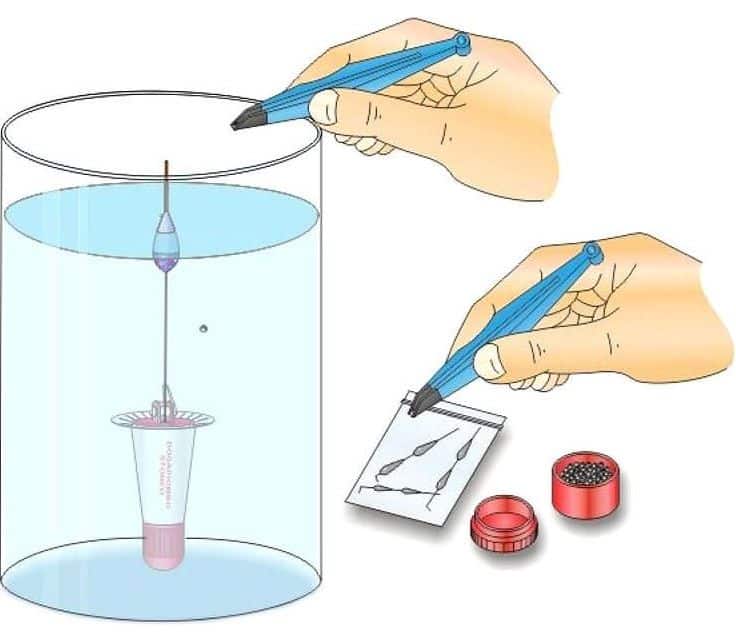
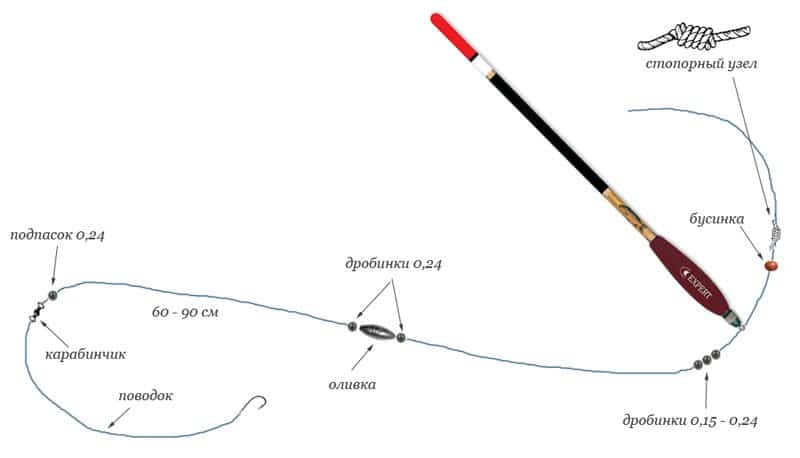
Float to sinker ratio: detailed table
To determine the required weight of sinkers for loading the float, you can use the calculated data. However, it should be understood that this applies to sports gear, in which both the weight of the weights and the carrying capacity of the float are indicated exactly. Otherwise, it is still better to check experimentally.
| Float capacity | Shepherd weight | The weight of the main cargo (olives or pellets) | |
| Still water | Flow | ||
| 0.5 | 0.01 | 0.02 | 0.04 |
| one | 0.04 | 0.07 | 0.09-0.011 |
| 2 | 0.07 | 0.09 | 0.110.013 |
| 3 | 0.09 | 0.13 | 0.13-0.16 |
| four | 0.13 | 0.17 | 0.16-0.19 |
| 5 | 0.17 | 0.2 | 0.24-0.29 |
If you choose the right weight for certain fishing conditions, you can not miss a bite, and also get real pleasure from the “dancing” of the float on the water.

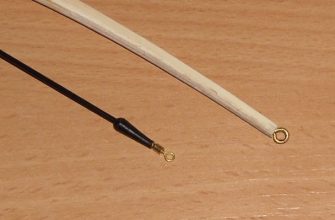

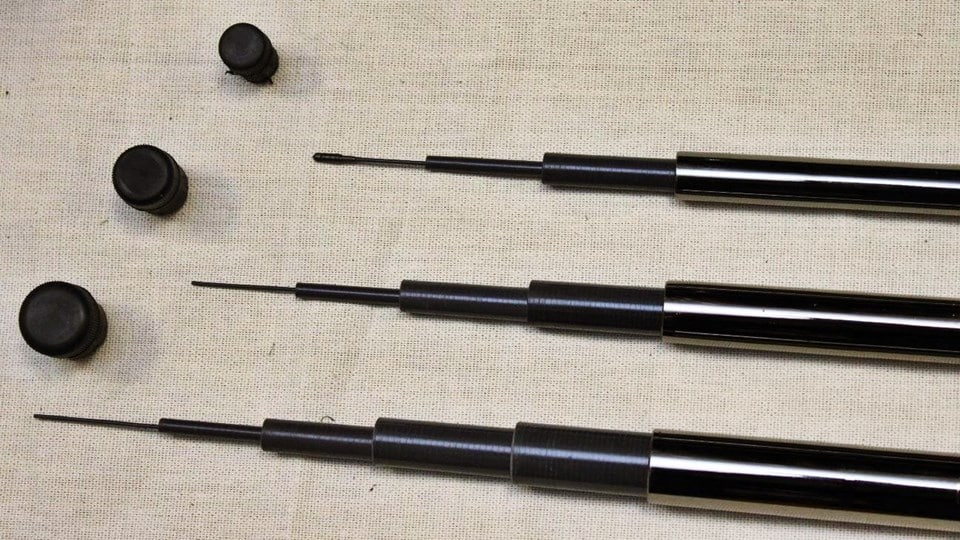
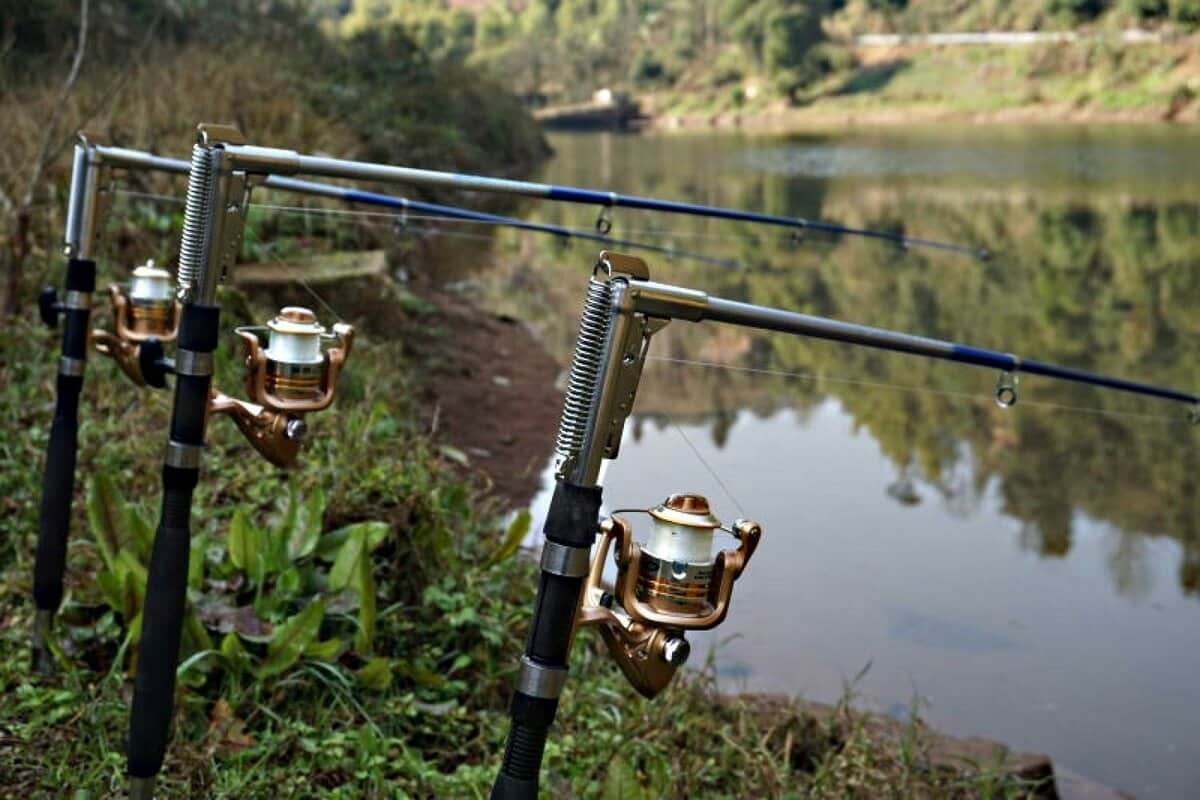
Цитата: “В тихую погоду огружайте под самую вершинку. В ветренную позвольте телу поплавка возвышаться над поверхностью”. Вообще-то, как раз наоборот. Если Вы, конечно, не хотите, чтобы ветер мотал поплавок и болтал приманку.
В итоге, можно ограничиться одним вариантом,- под самую вершинку. На любой случай.
Бред “рыболова-эксперта”. Таблица в конце опуса вообще говорит, что автор даже в школу не ходил.